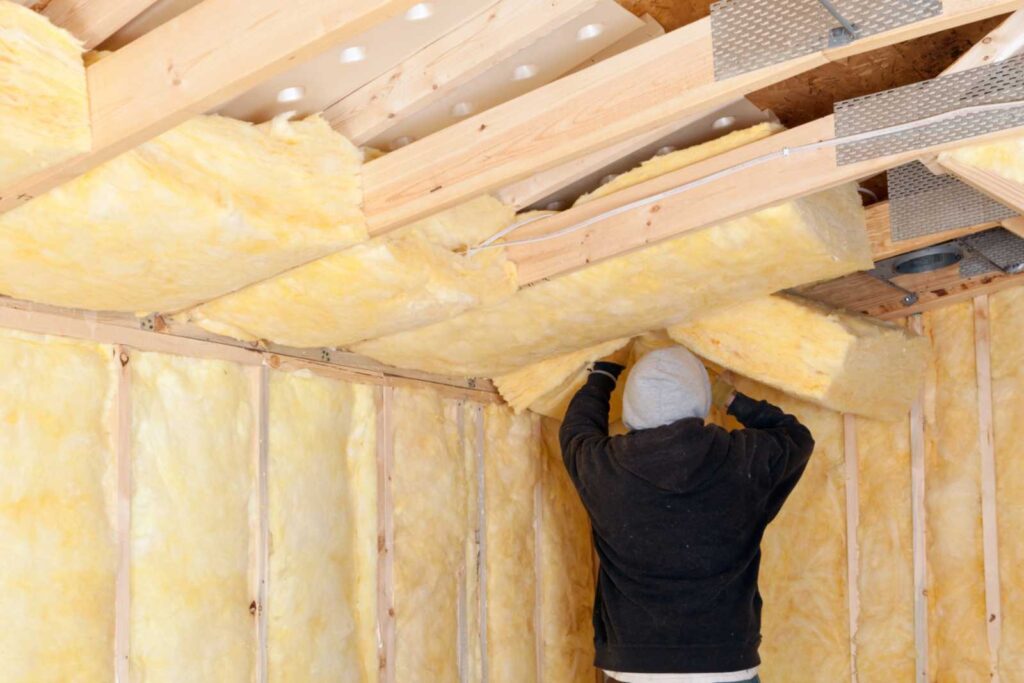What Is Fiberglass Insulation?

An Introduction to Fiberglass
Insulation plays a pivotal role in the world of construction. Despite its prominence, few are familiar with the materials used to create insulation and their impact on thermal performance. To help homeowners understand “what is fiberglass insulation,” Westside Drywall & Insulation is here to highlight the ins and outs of this insulation material.
What Is Insulation Made of?
Insulation is an umbrella term encompassing many building materials used to encourage indoor temperature regulation and energy efficiency. Depending on the local climate, your budget, and your thermal performance objectives, you can choose between a wide range of insulative materials. Among these options, fiberglass is one of the most popular.
Exploring a Material Rooted in Historic Value
Fiberglass insulation has a long-standing history in residential and commercial construction. The early forms have been found dating back to ancient Egypt. Since then, the fabrication of fiberglass has continued to evolve, leading to the high-performance insulation material seen today.
What Is Fiberglass Insulation Made of?
As the name suggests, fiberglass insulation refers to a recycled plastic material reinforced by tiny glass fibers. The glass fibers are blended with limestone and/or sand to create long, cotton-like strands that aid in restricting the flow of heat to regulate indoor temperatures.
The Features of Fiberglass Insulation
The popularity of fiberglass insulation is characterized by three primary features. These features include:
- Impressive thermal resistance, restricting heat loss and transfer
- Air-proof seal, combating air leaks and drafts to supercharge energy efficiency
- Effective sound absorption and noise-dampening capabilities
How Does Fiberglass Insulation Work?
There are two types of fiberglass insulation: fiberglass batts and loose-fill fiberglass. In both cases, the material limits heat transfer by trapping warm air within its network of glass fibers. This inherent process prohibits heat from escaping during the cooler months and prevents hot outdoor air from infiltrating your interior during the summer.
What Is Batt Insulation?
Fiberglass batt insulation is the most common of the two fiberglass installation methods. This process involves fitting pre-made rolls or sheets of fiberglass in the vulnerable areas between your attic’s wall studs, floor, and ceiling joists. With different density options to choose from, fiberglass batt materials offer varying degrees of thermal performance.
Loose-Fill Fiberglass Insulation
In contrast to fiberglass batts that come in pre-fabricated rolls, loose-fill fiberglass insulation refers to loose material fibers. This method is used for oddly shaped spaces or areas with obstructions that prohibit the use of pre-cut batt installation. Loose-fill fiberglass installation is installed using a blowing machine or poured application, which provides seamless coverage and elevated thermal performance.
The Benefits of Opting for Fiberglass Insulation
Fiberglass insulation is preferred by homeowners and builders across the nation. The advantages of opting for this long-standing favorite include:
- Economical and cost-effective
- Cut energy expenses by up to 40%
- Extended longevity when properly installed and maintained
- Reduced risk of moisture intrusions and/or fire
- Impressive R-value ratings between 2.2-4.3
Factors to Consider Before Installing Fiberglass Insulation
When properly installed, fiberglass insulation is incredibly reliable and long-lasting. On the other hand, fiberglass can be problematic when mishandled. To mitigate premature degradation and reduced thermal performance, entrust your fiberglass installation project to qualified professionals, such as our team at Westside Drywall & Insulation.
Where to Install Fiberglass Insulation
Fiberglass insulation offers extended application versatility. Used in both residential and commercial spaces, fiberglass is an effective choice for the following:
- Attics to mitigate heat loss and transfer
- Interior walls to regulate indoor temperatures
- Crawl spaces/basements to minimize heat loss, humidity, and moisture
- Flooring for improved acoustic and thermal performance
Get Started With High-Performance Fiberglass Insulation
If it’s time to upgrade your insulation, Westside Drywall & Insulation has you covered. Discover the gold standard of fiberglass insulation with our trusted installers. Contact us today to learn more about how fiberglass insulation can bring value to your living space.
